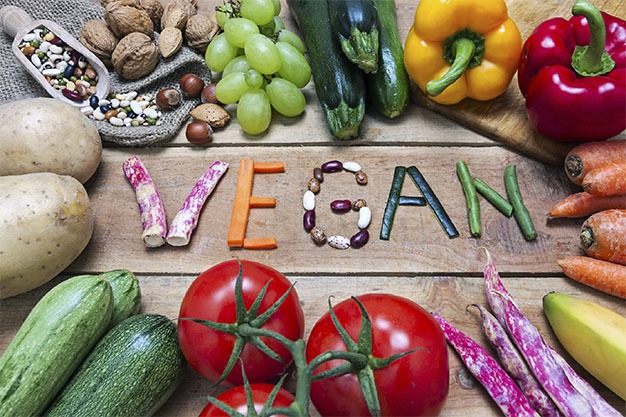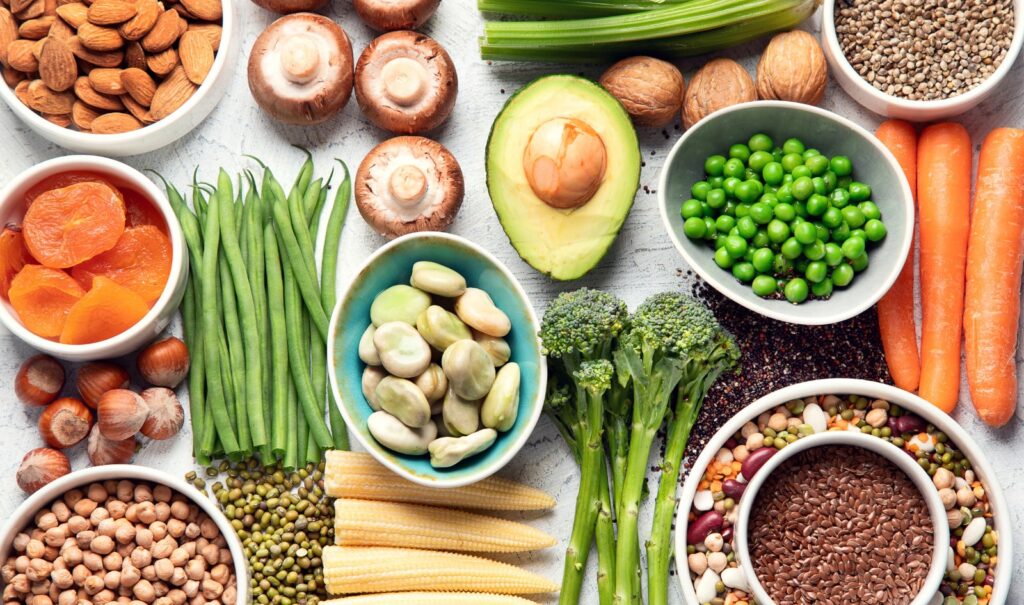Climate change continues to make itself increasingly felt every day. Many individuals are reconsidering their dietary preferences in light of this issue. The global climate crisis affecting the animal food sector is a fundamental reason for the approximately 15% increase in greenhouse gas emissions.
Another prevalent reason is the unethical activities animals are subjected to. When all these issues come together, veganism and vegetarianism come to the forefront, becoming a philosophy of life in dietary choices. However, many people are not familiar with the meaning of veganism and vegetarianism, lacking information about the differences between the two concepts.
Vegans, who are defined as individuals not consuming animal products, abstain not only from meat and its products but also from products such as eggs, honey, cheese, and milk. Standing against the exploitation of animals, vegans avoid all products derived from animal sources. In addition to avoiding animal food, they also refrain from using care and clothing products related to animals.
Vegetarians, known as individuals not consuming meat, are termed “etyemezlik” in Turkish. The rules in this dietary model are not as strict as in veganism. It is generally considered a transition phase to veganism. Vegetarianism can be divided into six groups:
- Lacto-vegetarianism: Consuming only milk and dairy products
- Ovo-vegetarianism: Not consuming meat and meat products, only eggs
- Lacto-ovo-vegetarianism: Consuming only eggs, milk, and dairy products
- Pesco-vegetarianism: Avoiding red meat and poultry, only consuming seafood
- Pollo-vegetarianism: Preferring only poultry, avoiding red meat and seafood
- Flexitarianism: Consuming red meat, poultry, and seafood
Difference Between Vegan And Vegetarian
After understanding the two concepts, the differences between the two dietary models can be easily grasped. Vegans do not prefer any animal products such as cream, cheese, honey, and yogurt. Vegetarians, on the other hand, do not only adopt meat consumption in their diet.
Vegetarians obtain nutrients not derived from meat from other animal foods. For a healthy diet, vegans source all components from plant-based origins. Additionally, compared to vegetarianism, veganism has a more comprehensive life philosophy. Vegan-labeled products are preferred for all needs such as clothing, cleaning, and cosmetics, whereas vegetarianism is not as comprehensive in this regard.
Plant-Based Protein Sources And Combinations
A common concern in both vegan and vegetarian diets is the inadequate intake of protein. Many experts argue that through proper planning, a diet devoid of animal sources can still provide all essential nutrients. Some plant-based foods contain more protein than others. Various studies, both recent and old, support the idea that high-protein diets support muscle strength, weight loss, and a feeling of fullness. From a health perspective, proteins offer the following benefits:
- An essential part of a healthy diet
- Composed of chemical building blocks called amino acids
- Required for cell repair, body growth, and proper functioning
- Proteins that use amino acids for bone building, repairing body muscles, and hormones and enzymes act as an energy source.
Proteins, composed of amino acid building blocks, have 20 different amino acids through different combinations. The body produces some amino acids on its own, known as non-essential amino acids (11 in total), while others need to be supplemented from external sources. Essential amino acids not produced by the body are obtained from the diet.
On average, daily nutrient intake for an adult is determined to be 0.8 to 1 gram of protein per kilogram of body weight. To provide a more illustrative example, a daily protein requirement for an adult weighing 60 kg would be between 48 grams and 60 grams (60 kg * 0.8 grams – 1 gram). High-protein vegan foods benefit diets by reducing the intake of animal proteins, regardless of whether one is an omnivore, vegetarian, or vegan.
Vegan And Vegetarian Main Meal Alternatives
Vegans, who follow a restrictive dietary model, are mistakenly assumed to have few food alternatives. This notion is entirely false. All vegetables and fruits provided by nature can easily be consumed by vegans. Furthermore, many cuisines with diverse cultures are suitable for vegan diets.
Recipes that exclude animal products are made suitable for vegans by choosing various plant-based oils. Additionally, many dishes can be veganized. Examples include vegan stuffed peppers and vegan burgers, which serve as alternatives for vegans. All foods that do not contain animal products are suitable for vegans, allowing them to add delightful alternatives to their diet safely.
Colorful And Flavorful Salads With Vegetables
The key to healthy eating with colorful plates lies in seasonal vegetables. Salads prepared with seasonal vegetables are not only colorful but also delicious.
They appeal to both the eye and the palate, providing a veritable feast of flavors. Would you like to embark on a journey in the world of taste by preparing colorful and tasty salads with vegetables? We have compiled colorful and tasty salads for you.
Unmissable Flavor: Summer Salad
To prepare the indispensable salad of the summer season, combine bell peppers, cucumbers, tomatoes, onions, and fresh mint leaves. The harmonious ingredients not only add color to your table but also offer a unique taste.
Arugula And Beet Composition Salad
Nutritious and healthy arugula leaves are combined with beet slices, enriched with feta cheese and walnuts. It is preferred both for its taste and nutritional value.
Winter Season’s Unmissable Taste
Celery, carrots, pomegranate, and red cabbage are indispensable vegetables in the winter season. By mixing these compatible ingredients, you can prepare an energy-packed winter salad rich in vitamins and minerals.
Citrus Salad For Citrus Enthusiasts
For a salad composed of tangerines, grapefruits, and oranges, rich greens and walnuts are added. This salad, being both fresh and healthy, is preferred by many for its invigorating qualities.
Walnut And Grape Salad For Walnut And Grape Enthusiasts
Green salad leaves are combined with sliced apples, walnuts, and fresh grapes. The prepared walnut and grape salad achieves a balance between sweet and salty flavors.
Purslane Yogurt Salad
A delicious salad is made by combining yogurt, olive oil, and lemon with purslane. It not only offers a light taste but also takes its place on the table with its nutritious properties.
Avocado And Quinoa Salad
Prepared with nutritious quinoa seeds and sliced avocados, this salad is enriched with fresh greens. This unique salad is both filling and a rich option in terms of vitamins.
Colorful and nutritious salads prepared with seasonal vegetables add both flavor and color to tables, enriching your diet with a delicious and nutritious journey.
See you in the next post,
Anil UZUN


